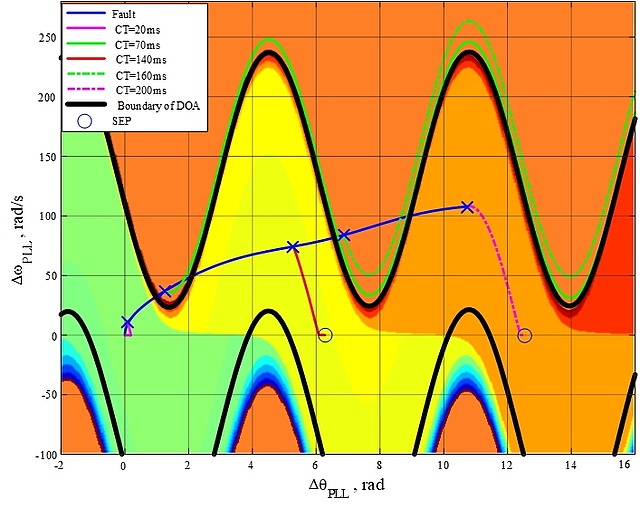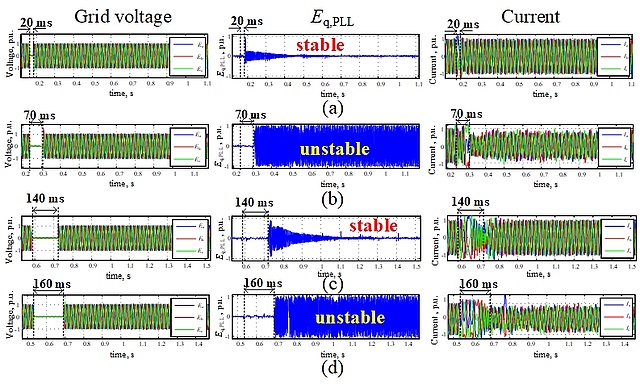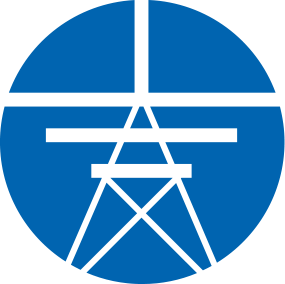Domain of Attraction’s Estimation for Grid Connected Converters with Phase-Locked Loop

Fig.1 Domain of Attraction of converter system
A large number of non-linear hardware and control units exists in power electronic system used in grid connected devices. The analytical transient stability analysis of grid-connected converters presents numerous difficulties. A common method to tackle this problem is the stability analysis using Lyapunov’s method. By applying this method, difficulties arise not only from finding a suitable Lyapunov function, but also from checking the constraint of Lyapunov stability.
This paper analyzes the transient stability of a converter with a PLL connected to the grid. The analysis is based on the domain of attraction obtained by the sum-of-squares programming method. Through the reduced-order modeling of the grid-connected converter, we obtain a second-order nonlinear differential equation describing the system's global dynamics. Subsequently, this paper starts from the Lyapunov stability criterion and transforms the problem of estimating the system's domain of attraction (DOA) into a sum-of-squares programming problem. In this form, system stability can be investigated with low computational effort while maintaining sufficient accuracy for practical solving problems. To do so, this paper proposes a seven-step iterative sum-of-squares programming process, and applies it to the estimation of the DOA.
The application of the method to a real-world problem shows that the converter's periodic DOAs exist as predicted in theory. There is no single critical fault-clearing time, but several critical fault-clearing ranges. The possibility to return to stable operation after fault clearing depends periodically on the fault clearing time, a behavior which is caused by the nonlinear control circuits of the converter and cannot be observed in classical synchronous units. In addition, the results of the DOA's estimation reveal that increasing the PLL's control frequency after a voltage sag can expand the estimation of the DOA and improve the system's robustness. The influence of the SCR and the current amplitude of the converter on the estimation of the DOA are clearly reflected in the DOA's size and position relative to the stable equilibrium point. The aforementioned DOAs' estimation is also verified by time domain simulation and StarSim’s controller hardware-in-the-loop experimental tests.

Fig.2 Experimental results of complete fault process with fault duration of (a): 20 ms = stable, (b): 70 ms = unstable, (c): 140 ms= stable and (d): 160 ms = unstable.
The paper has been published in the journal IEEE Transactions on Power Systems in a cooperation of IEAN with Prof. Robert Schuerhuber, em.Prof. Lothar Fickert as well as Dr. Katrin Friedl, and of Shanghai Dianji University with Prof. Guochu Chen and Prof. Yongming Zhang.

